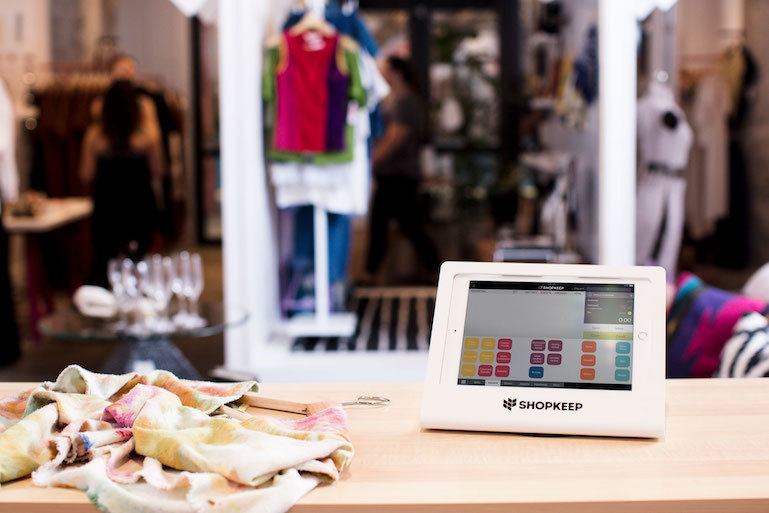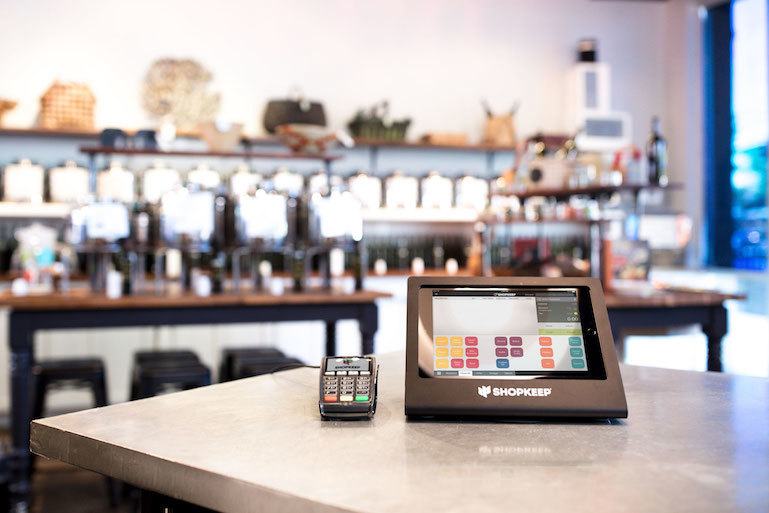
How to Choose a Small Business Retail POS System
Choosing a point of sale (POS) system for your small business is a major decision that affects how you handle everything from running transactions to managing inventory and developing your marketing strategy.
Because of how central a POS system is to a business’ operations, picking the right one isn’t something to rush into. You’ll first want to take stock of your current processes to identify what you can improve with the help of a POS system. With that list in hand, you can then compare systems against one another until you find the one that balances the features you need with a price that fits within your budget.
Sound overwhelming? Don’t worry. In this post, we’ll walk you through the key features you should expect from a modern retail POS system, explain the additional hardware you’ll also need, and even provide a few examples of popular POS system to consider.
What Features Should You Look for When Choosing POS Software?
Today’s POS systems are much more than cash register replacements. They’re a modern-day jack of all trades that can help you manage multiple areas of your business. But that doesn’t mean that every POS is going to work for you.
Some POS systems focus heavily on the food-service industry, so you’ll want to avoid those from the outset. There are others that are little more than a way to take credit card payments with your smartphone. We recommend avoiding those too.
Since you’re running a retail business, you’ll want to look for a POS system that specializes in retail. This might seem obvious, but there are so many systems out there, that it’s easy to end up turned around. To help you get started, we put together a list of key features that any retail POS system worth its salt will offer. Let’s dig in.
Transactions
Before getting into more sophisticated features, make sure the POS systems you’re evaluating can do the basics first. For retailers, that’s going to center around transactions. You’ll want to confirm that the systems you’re considering can do everything you need from a transactions basis. Here are a few boxes you will want to make sure are checked:
- Support for common payment methods like credit, debit, cash, NFC, gift card, and check
- Compatibility with a variety of payment processing hardware like card readers and barcode scanners
- Integration with your payment processor of choice
Taking care of these baseline features is critical to handling your day-to-day transaction needs, keeping your customers happy and your bottom-line healthy in the process.
Inventory Management
Improved inventory management is one of the key benefits your retail business can expect from a POS system. It only makes sense then to focus on a system with robust capabilities in this department. Most retailers will want a system that offers at least some of the following:
- Tools that are generally easy to use while remaining flexible and highly configurable
- The ability to manage inventory in bulk via CSV or another method
- Support for product variants or variations (also known as matrix inventory)
- Organizational tools like reorder triggers or alerts
When evaluating systems, it’s also important to understand how inventory management works at a basic level. When you first set up your system, it’s your responsibility to add inventory to it. If you only sell a few products, you might do this by hand. If you sell hundreds or even thousands, it’s often easier to add products in bulk via a CSV file. You’ll need to repeat this process every time you receive new inventory.
As you make sales, your POS system will automatically update your inventory counts for you. In addition to helping you understand when you need to order more stock, this can also alert you to potential issues in your business like theft. For example, if someone is stealing from your store, you may not notice at first. However, if you do a manual inventory count and compare it with what’s shown in your POS, you can quickly uncover the issue.
Staff Management
Your POS system should include a basic set of employee management tools at a minimum. With these tools, your staff and clock in and out straight from your POS. This can benefit your business in a number of major ways:
- No need to buy and maintain a separate time clock
- The ability to accurately track employee hours for smarter scheduling and more accurate payroll calculations
- You can connect specific staff with register activity like opening the cash drawer, pay-ins/payouts, and open/close amounts
Staff management tools can also go beyond basic diagnostics to help you uncover deeper trends. For example, when combined with sales data, you can identify your best and worst performing employees. This can lead to further actions like targeted training sessions or reevaluating how you schedule staff.
Analytics
Outside of the ability to run sales and manage inventory, the most important capability of a POS is its reports and analytics. You’ll want to ensure that potential systems offer reports covering the major areas of your business like inventory (both quantity and value), sales performance, staffing, and marketing. With these reports, you’ll understand what’s going on with your business. You can then use that information to make strategic changes to improve operations.
In addition to offering the right reports, you’ll also want to confirm that the reports are presented in a way that satisfies you. For most retailers, that will mean the reports are easy to read and configurable to a certain extent. By configurable we mean that you can easily change date ranges and compare different date ranges or data points against one another. This flexibility lets you dig deeper to uncover the insights that are most meaningful to your business.
Integrations
Modern POS systems use integrations to increase your team’s productivity. If you’re unfamiliar with the term, integrations are connections between your POS and third-party software not made by the POS company itself. ShopKeep, for example, has integrations with MailChimp and QuickBooks (among other integrations), which allows for more robust email marketing and accounting capabilities.
The integrations you need will depend both on the tools you’re using today, as well as the tools you plan to use in the future. If you use tools that are almost industry standard, like MailChimp and QuickBooks, there’s a good chance that many POS systems will integrate with them. However, if you use something more niche, that’s likely not the case. It’s up to you to decide how important that niche integration is when the time comes to finally choose a system.
Marketing
Marketing is more than just taglines and billboards. Today it involves everything from email to social media to special promotions and much more. That’s where your point of sale comes in. Pick the right one and it can help you execute your marketing strategy. But pick the wrong one and you’ll be left high and dry. To help you avoid that, let’s look at some of the major marketing features your POS should have:
- The ability to add collect email addresses from customers
- Integration with a dedicated email marketing program
- Support for a loyalty or rewards program
- The ability to sell gift cards
- Customer relationship management tools that allow you to track purchasing behavior
I touched on it a little earlier, but in addition to these basic tools, you’ll also want to review the platforms with which your POS can integrate. In some cases, these integrations may unlock further marketing capabilities that will help you launch more sophisticated campaigns.
Data Security
This one may be the most important. Data breaches at retail locations looked to be a recurring topic this year. When choosing a POS system for your business you certainly don’t want this to happen. Look for a system that stays current with industry standards and Payment Card Industry Data Security Standard (PCI DSS).
Mobile POS
A mobile POS or a mPOS is just that, a portable POS system. Generally speaking, this means that the POS software runs on an iPad or Android tablet. A mobile system is especially helpful if your checkout line gets long and you want to start ringing up customers on the sales floor. It’s also worth considering this type of system if you plan on running a pop-up shop or participating in a local event like a holiday market. Cost is also an important factor here. While we won’t get into a detailed breakdown, you can expect to pay less overall for an mPOS than for a traditional PC-based POS system.
While this list might look long, it an accurate depiction of the wide-ranging functionality a modern POS system offers. To make the best choice for your business, you’ll need to ensure that the software you choose meets your needs in each of these areas. But that’s just half of the equation. You’ll also want to confirm that your software will work with POS hardware that meets your needs as well.
SEE ALSO: What is a POS System? Your Guide to All Types of POS Systems
Creating a POS Terminal Setup
Choosing the right POS software is important, but it’s only half of the equation. The right POS hardware is equally impactful, and frankly, a necessary component of an operable POS system to complete transactions. Let’s look at some of the key pieces of hardware you’ll need to consider when selecting a system:
POS Terminal Hardware
POS software generally runs on one of three types of hardware: a tablet (Android or iPad), desktop PC, or proprietary hardware that’s a combination of both tablet and PC. However, for most small businesses, we recommend choosing modern, cloud-based POS software. Almost exclusively, this category of software runs on tablet hardware. In some cases, it may also run on a desktop or laptop via a standard web browser.
As far as choosing a system is concerned, you’ll want to ensure the vendor you select runs on the hardware you want to use. Remember, you’ll likely spend hours using your POS each week, so it’s important that it runs on a device you’re comfortable with.
Credit Card Processing Equipment
This piece of hardware has a direct influence on your ability to accept so you’ll want to choose wisely. Outside of compatibility with your POS software, the biggest thing to confirm is that it will allow you to accept all major payment methods. For most retailers that will include credit, debit, EMV chip cards, and NFC or smartphone payments like Apple Pay. Of course, you might want to accept cash or even check as well, but a credit card reader isn’t needed to do that.
Cash Drawer
While they might be fading in popularity, it’s likely that of your shoppers will still prefer to pay with cash or even check. To make accepting payments this way you’ll want to add a cash drawer to your POS system. This isn’t a complex piece of hardware so the main thing you’ll want to confirm is that it works with your chosen POS software.
Barcode Scanner
The biggest benefit of a barcode scanner is that it allows you to add items to a transaction simply by scanning their barcode with your reader. For a busy business, this increased efficiency can do wonders to cut wait times, making customers happier. When choosing a barcode scanner the most significant choice is going to be between 2D and 3D readers. 2D readers can scan traditional barcodes, while 3D ones can also scan QR codes.
The other big distinction is between wired and Bluetooth scanners. Wired scanners need to be physically connected to your POS to work, while Bluetooth ones give your cashiers a bit more freedom. Again, you’ll want to make sure your POS software works with the option you prefer to use.
Receipt Printer
While many POS systems allow you to email receipts, it’s likely that some customers will still prefer a traditional paper receipt. Some credit card readers include a built-in receipt printer, but if not, you’ll want to pick up a standalone one. Thermal printers and dot matrix printers are the two most common varieties. Restaurants usually lean toward the dot matrix style for their kitchen printers since the heat of a kitchen can ruin the paper used in a thermal printer. However, for most retail businesses, either option will work.
Product Packaging
This isn’t hardware, but it is an important part of the checkout process unless you’re planning on your customers walking out with their purchases in their hands. In addition to functioning as packaging, businesses can also use bags, boxes and other wrapping materials to market themselves. Just slap your logo on a bag and as soon as they leave your store you have mobile advertising.

Choosing a System
Now that you know what to look for in a system, it’s time to choose one. There are many different options on the market, so there can be a lot to sift through before you find an option that works for you. Luckily, I’m here to help. ShopKeep and Square are two well-known systems that will work for a wide variety of retail businesses.
ShopKeep
ShopKeep is an affordable cloud-based POS solution that can meet or exceed the criteria we covered above. Founded by a small business owner, ShopKeep was designed to give business owners an easy to use system that doesn’t skimp on power. As a cloud-based mobile POS, ShopKeep runs on both iPads and Android tablets. This gives merchants access to reliable, modern hardware, while still offering them the flexibility to choose the platform that works best for them. Plus, ShopKeep also offers a mobile app, Pocket, that gives you access to all of your most important business data while you’re on the go.
Square
Square is primarily a credit card processor that has subsequently released POS software aimed at retail merchants. Because Square started as a credit processor, it’s POS software tends to lack the more sophisticated features that a “real” business needs. Similarly, because many Square merchants are part-time business owners, unlike ShopKeep it doesn’t offer the 24/7/365 customer support that more sophisticated businesses need.
SEE ALSO: How is ShopKeep Different From Square?
ShopKeep and Square may have a few things in common, but when it comes to choosing a retail POS for your small business, ShopKeep has some clear advantages. It offers more sophistication and support, without skimping on ease of use. If you’d like to learn more about ShopKeep, call us at 1-800-820-9814.
Want to try ShopKeep for yourself?
Just answer a few easy questions.
Need help finding the right point of sale?
Just complete the form. We’ll call you right back to explain how ShopKeep can work for you.
Hit the ground running.Sprinting, in fact!
Read our free, comprehensive guide, Small Business 101, to learn all you need to know about starting a thriving business.

